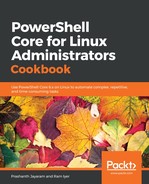Execution policies are nothing but conditions set on the system to avoid accidental script runs. They work at different scopes.
There are three scopes in PowerShell, as noted already. The LocalSystem scope is at the end of the chain. Right above it is the CurrentUser scope. At the top, is the Process scope. The level of precedence is Process > CurrentUser > LocalMachine. Therefore, if any policy other than Undefined is set at the Process scope, the session would use the policy set on the process. In case it's Undefined, it would look for the policy set on the CurrrentUser scope. If CurrentUser has the policy marked as Undefined as well, the session would apply the policy applied at the LocalMachine level. If LocalMachine has Undefined set, the session would pick the Default policy, which is based on what PowerShell has defined as the policy, which may vary based on the version of operating system. On Windows 2016, for instance, the default policy is RemoteSigned.
The policies set at the CurrentUser and LocalMachine levels are stored in the Windows Registry. The policy set on the Process scope is stored in the ephemeral environment variable, $env:PSExecutionPolicyPreference.
